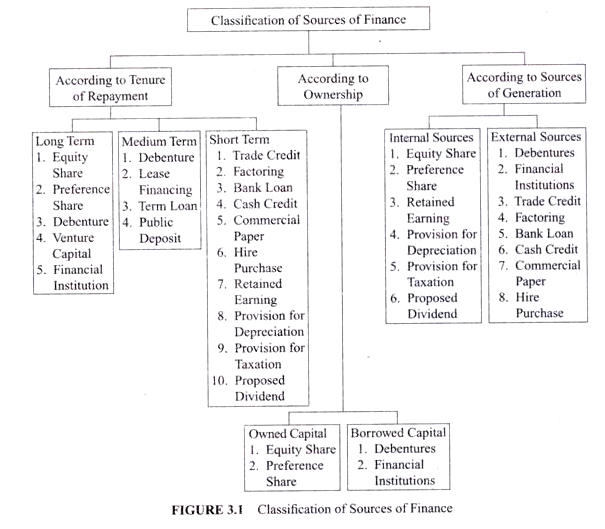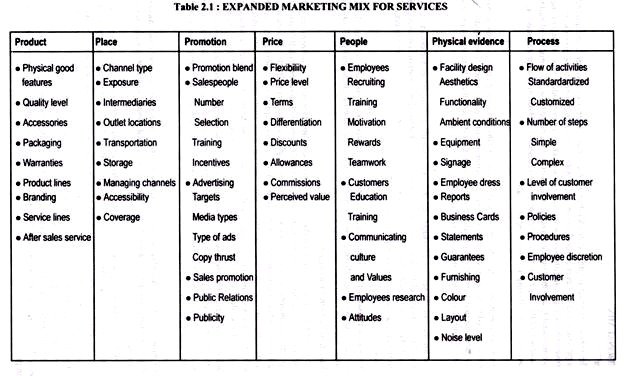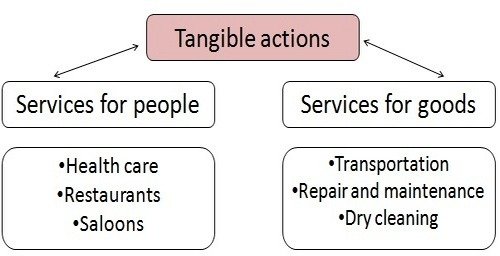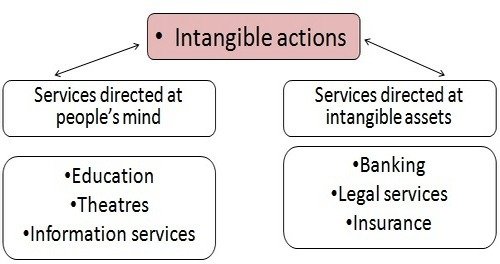Accounting procedures may baffle you, and legal statutes may daze you, but if you’re like many small-business owners, the one facet of your business that you can comprehend and that sustains your interest is marketing, perhaps because it involves the relatable yet always surprising realm of human behavior.
Unfortunately, most of what you read focuses on marketing a product, not a service. If your specialty is a service, the question that probably drives you most is What factors affect consumer behavior in the service disciplines? Along with that, you are probably curious about whether consumers follow the same decision-making process while they shop for a service as they do when they shop for a product.
Dive Right In to Consumer Behavior Theory
- Understanding how consumers shop for financial services, health care, lawyers and home service contractors, all of which provide fascinating insights about consumer behavior in services in general.
- Revisiting the five steps in the traditional decision-making process.
- Reviewing suggestions for positioning services in the marketplace.
Contradictions Riddle Consumer Behavior
Brace yourself for some beguiling truisms about the significance of consumer behavior. Given what you already know about marketing, these observations shouldn’t come as much of a surprise:
- Consumers know exactly what they want.
- Consumers sometimes know little about what they want.
- Consumers can make careful, methodical decisions.
- Consumers can make impulsive decisions.
- Consumers say they would use online tools to expedite their search for services.
- Consumers don’t use online tools even when they’re available.
Smart Phone Usage Transformed Marketing
Rather than feel perplexed by these truisms, they should remind you that sometimes you must trust your instincts to guide you. Those same instincts fortified you to start a small business in the first place.
Also as you think about the most effective ways to market your service, it may help to keep certain facts about the factors affecting consumer behavior in mind. This information shouldn’t surprise you, but it should inform your most important marketing decisions.
Most Americans own smart phones, not just cellphones. In fact, 95 percent of people ages 18 to 34 and 67 percent of people ages 50 and up own smart phones.
People rely on their smart phones more than desktop computers or tablets to make searches for services. Since 2016, these digital searches have been one of the most dominant factors affecting consumer behavior, for both products and services. Beyond making purchasing decisions on the go, this insight suggests that consumers aren’t particularly interested in comparison shopping.
Consumer Behavior With Financial Services
If you sell banking, financial or insurance services – or any service, for that matter – you’ll want to bookmark Accenture’s 2019 Global Financial Services Consumer Study for a later read. The company surveyed 47,000 customers across Asia-Pacific, Europe, Latin America, the Middle East, Africa and North America and developed four customer personas that could arguably benefit anyone who wants a crash course in consumer behavior theory.
“The differences between these personas are striking and highlight how traditional demographic segmentation, such as age or wealth, can miss important nuances of how consumers view their financial providers,” the report says.
Four Personas May Sound Familiar
The personas identify:
Pioneers: Pioneers are the risk-takers who are tech-savvy and crave innovation. They are the ones most eager to engage with banking, financial and insurance providers on their smart phones.
Pragmatists: Pragmatists view technology dispassionately. For them, it’s a means to an end rather than an all-consuming passion.
Skeptics: These people are wary of technology and financial providers. Ironically, more than one-third are age 35 and under, which means they can be a tricky target group to engage.
Traditionalists: This older-than-55 group still values personal connections, tends to avoid technology and is losing faith in service providers.
Assess Conclusions About Consumer Behavior in Economics
Despite these differences, the study discerned five findings about consumer behavior in economic matters:
- Consumers expect providers to provide solutions to their needs.
- Consumers appreciate personalized service, such as offering a discount for a safe driving record.
- Consumers expect their online experiences – desktop, tablet and smart phone – to be fully integrated.
- Consumers trust their financial providers, and this feeling appears to be increasing.
- Consumers are more likely to share their personal information as long as they get something for it in return, such as a better deal.
The report distills a great deal and says a mouthful about consumer behavior in economics and marketing in general – when it concludes: What brings customers together sets them apart.
Consumer Behavior With Health Care Services
Any small-business owner whose interests even occasionally enter the health care field can benefit from the findings of a survey of 4,530 adults conducted by the Deloitte Center for Health Solutions. Certain factors affecting consumer behavior underscore most of the findings: Consumers are more practical than ever, focusing on issues such as cost and convenience, perhaps because these commodities elude them.
The study found that:
- Consumers are relying more on quality ratings, though a gap exists between their expressed interest and how often they use this tool.
- Consumers are amenable to new health care services, especially at-home diagnostic testing.
- The number of people who wear devices to track their health information has more than doubled since 2013. Moreover, many of these people are willing to share the information with a health care provider – an insight that could present an opportunity for a niche marketing campaign.
Ailing Consumers Want a Seamless Experience
These findings about consumer behavior in health care services led researchers to suggest that business owners, marketers and other people vested in the patient journey should:
- Offer online tools when they’re needed most, or when consumers search for a caregiver, look for alternatives, and shop for testing or diagnostic services.
- Create a seamless and communicative experience among the patient, caregiver and other members of a care team.
Consumer Behavior With Legal Services
You might conclude that people who shop for legal services tend to fit the traditionalist persona identified in Accenture’s financial services study. This is the commonality that binds many of the findings in the Legal Trend Report, which is billed as “the most comprehensive and the most granular analysis of lawyer activity ever published.”
The findings paint a picture of consumers who know what they want and are determined to find it, even if they rely on traditional means of communication to do so. Nearly 70 percent of the respondents say they prefer a law firm that promptly answers their first phone call or email.
Legal Consumers Are Money Conscious
Once that initial line of communication is open, the factors affecting consumer behavior include:
- A free, initial consultation. Nearly 65 percent of the respondents referred to this offer as a deal-breaker.
- Fixed fees was cited by nearly half of the people in the poll.
- Finances and customer service. In this category, 28 percent of people say they choose a firm if it accepts credit card payments, while 27 percent say that pleasant text message exchanges weighed heavily in their decision-making process, and nearly 20 percent say the firm’s website lured them.
The significance of this last consumer behavior cannot be overstated. Although consumers are shopping for legal services online and presumably are nudged into filling out and sending online contact me cards, they prefer to pick up the phone or send an email instead.
Consumer Behavior With Home Services
Consumers make more than 5 billion Google searches a day, and many of them are for contractors who specialize in home services such as electrical, plumbing, roofing and carpentry work.
By now, the owners of these companies know that their business must have a website that clearly explains the scope of their services. Research shows that 63 percent of consumers search for a home service company by scanning websites, and 30 percent of consumers won’t consider a business that doesn’t have one.
Consumers Are Impatient With Websites
However, the factors affecting consumer behavior with regard to home services don’t end there. More consumers than ever are conducting searches from their smart phones, and they’re in a big hurry to find what they’re looking for. Consider:
- Nearly half of consumers expect a webpage to load in 2 seconds or less, and they’ll abandon a website and move onto another if it doesn’t.
- Google says that for every 1-second delay, conversions – turning a visitor into a potential customer – drop by 12 percent.
- Nearly 85 percent of consumers will abandon a site where they’re prepared to make a purchase if the connection is not secure.
Word-of-Mouth Still Matters
Despite their dependence on technology, consumers shopping for home services still rely on one of the oldest forms of marketing: word-of-mouth. Small-business owners in this field should know that:
- Recommendations can increase conversions by up to 5.5 times.
- Converted customers acquired through word-of-mouth boast a retention rate that is nearly 40 percent higher than customers acquired by other means.
- Social media reviews and comments can influence the behavior of nearly 70 percent of consumers.
Word-of-Mouth Affects Consumer Behavior
Word-of-mouth remains one of the most influential factors affecting consumer behavior throughout the entire, five-step decision-making process. It’s a point worth remembering as you market your service and lead potential customers through the process, both online and in person.
A fundamental consumer behavior theory is that most consumers follow this progression for services and products before signing a contract or making a purchase:
- Recognize a need or problem
- Gather information about how to fill that need or solve that problem
- Compare and contrast worthwhile alternatives
- Make a decision
- Evaluate the wisdom of the decision
Develop Your Brand, Develop Yourself
It’s a lot of information to digest, although the parallels among consumer behavior in services can be so striking that they should leave an indelible mark on your memory and your marketing decisions. In addition to following your gut instinct, other tips about marketing services should assist your best efforts:
- Assuming that people do business with people they know, like and trust (and check out via word-of-mouth), go out of your way to develop a rapport with potential customers.
- Develop a keen understanding of your customer’s needs. If you do this and find a way to address these needs, you have likely found a customer for life.
- To a certain extent, you are the product,so you must sell yourself too, touting your own features and benefits.
Start thinking of yourself, not only your company, as a brand_._ Everything you do everything you say, how you dress, how you conduct a business meeting – and everything else you embody are part of your brand. It helps if you clearly differentiate your brand from others. If you’re uncomfortable drawing a direct contrast and citing competitors’ names, then be sure to explicitly state who you are, what you stand for and why you’re decidedly different and better.
Perhaps no better definition of personal branding exists than the one offered by Amazon founder Jeff Bezos: “Your brand is what people say about you when you’re not in the room.”
Like this:
Like Loading...




